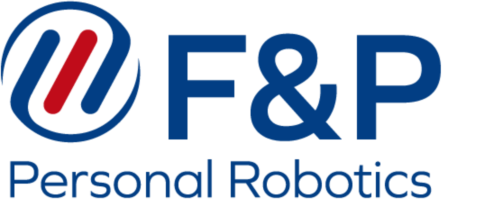With hundreds of thousands of people getting affected by COVID-19 every single day resources of healthcare systems are running out pretty quickly. Robots are ready not only to support healthcare workers in the hospitals but also to assist everyone in preventing the spread of the disease.
What Can Robots Do to Help?
From food deliveries to the measurement of blood pressure robots can do much more every day. COVID-19 pandemic opened doors for fast development and deployment of robotic technology. Currently, multiple robots across the world are supporting healthcare staff by overtaking repetitive tasks such as the delivery of food and water, disinfection of the rooms, body temperature measurement, and many others.
Telemedicine
Contactless observation of the patient is the key to ensure the safety of healthcare professionals in situations like coronavirus pandemic. Assistance robots allow healthcare professionals to operate them in the facility, enter the ward of the patient, and observe the current status. At the same time, it allows the patient to receive more attention as well as explain his or her complaints without the risk of spreading the disease. Autonomous navigation and AI allows robots to perform telemonitoring tasks autonomously and receive all the data required for the doctors to evaluate the effectiveness of the treatment prescribed.
Remote observation of the patients also allows doctors to observe multiple patients located in different facilities at a time. This brings the benefit to patients who can receive help from specialists without having to wait for a very long time. Remote observation of the patients is also beneficial for the doctors who are monitoring patients over long periods of time and are providing their knowledge and support in the time of need.
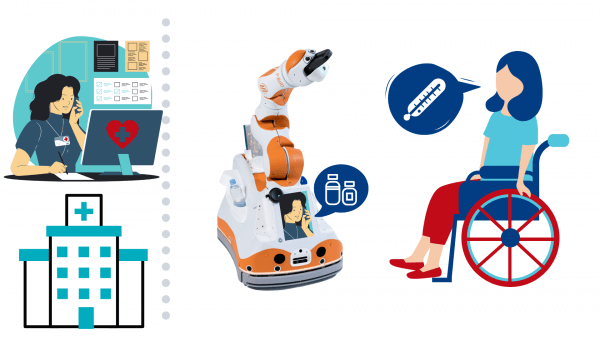
Entertainment and Support
It may seem like something small and unnecessary but the ability to crack a joke or say that “everything is gonna be ok” plays a big role in situations like COVID-19 pandemic. Once people are isolated for a long time they might start feeling lonely and depressed. Without the ability to interact with other people, it is really important to provide alternative options such as interaction with the human-friendly robot. Robots’ ability to stay positive and encourage another person to feel the same brings back the normality of everyday life. To boost the morale of people, collaborative robots are also able to play music, sing, and dance.
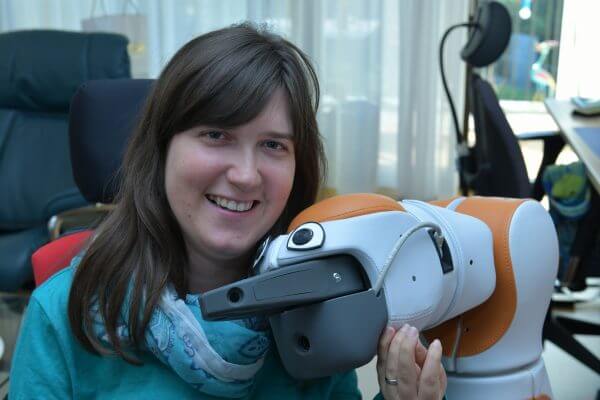
Food and Water Delivery
In secure environments such as quarantined facilities and hospitals, the ability to provide necessary supplies to the patients without having to change protective clothing every time means a lot. Assistant robots can perform multiple delivery rounds entering quarantined spaces and ensuring that people in social insulation receive all the necessary goods they need.
On top of that, the ability to remind the patients to drink water regularly is very important, especially for elderly people. Dehydration is a well-known problem in healthcare institutions. It can be addressed with autonomous robotic water distribution solutions.
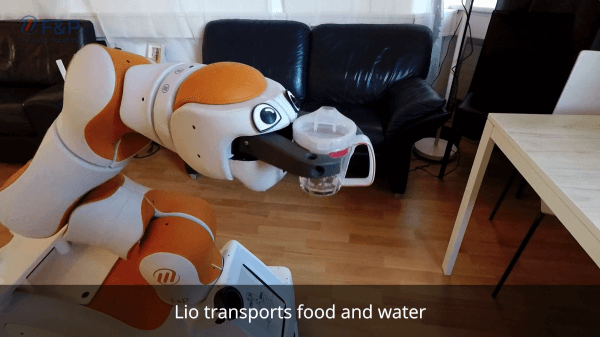
Body Temperature Measurement
Estimating elevated body temperature is an important aspect in the early detection of COVID-19 infection. To repeatedly monitor all the visitors and passers-by in healthcare institutions can be a challenging task for healthcare personnel. Meanwhile, personal assistant robots can evaluate the body temperature by having a mounted thermal camera. Once detected the person with the elevated body temperature is required to proceed to the more accurate check-up using a medically approved device. This type of infection prevention can help to reduce contact with potentially infected people to a minimum and allow staff to work more efficiently.
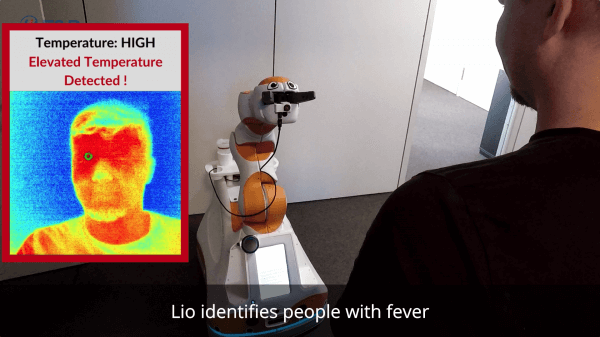
Disinfection of Various Surfaces
Disinfection of commonly touched surfaces around public facilities is the answer to decreasing the spread of the infection. The often touched surfaces include door handles, handrails, and elevator buttons. It requires a lot of patience and effort to disinfect all surfaces around the clinic. Meanwhile, collaborative robots can perform the disinfection with efficient UVC light by using a safe gripper attachment designed to be lethal to germs and viruses and safe to people at the same time.

Cobots Are the Answer
Humans in a protective covering will always be available and required for lifesaving or critical care, but simple interactions can be handled by robots. The use of cobots allows reducing the risk of contamination and the spread of the infection. At the same time, the implementation of robotics supports healthcare staff in repetitive tasks. The professional personal robots are useful and supportive for both – patients and workers of the healthcare facility.
